Table of contents
Shiitake mushrooms ( Lentinula edodes), also known as Pasania mushrooms, are very versatile. Shiitake can be eaten cooked (in any form) and , above all, raw.
Using shiitake mushrooms in the kitchen: The
edible shiitake mushroom (shii-take), which originally comes from Japan and China, is usually served boiled, fried, baked or steamed. It is traditionally eaten with rice, sushi or vegetables, seasoned with miso, soy sauce or tomato sauce (tomato sauce). In Europe it is used in ragouts, risottos, stir-fried dishes, vegetable dishes, sauces or soups. Can you eat shiitake mushrooms raw? or Can you eat shiitake mushrooms raw? are frequently asked questions. Yes, you can definitely eat shiitake mushrooms raw.
Shiitake mushrooms have a characteristic mushroom flavor and are a great way to spice up various dishes. They have the taste quality umami (umami taste). Along with sweet, salty, bitter and sour, umami is another taste that is also recognized by science. Umami is created by the natural glutamate they contain and activates special taste receptors on the tongue.
Since shiitake mushrooms have great healing properties, they can be regularly incorporated into dishes. However, it should be noted that in rare cases a skin reaction, shiitake dermatitis, can occur. You can find out more about this under "Danger - Intolerances - Side Effects".
Recipe for shiitake mushrooms with pak choi:
Ingredients: 6 mini pak choi, 150 g fresh shiitake mushrooms, 3 tbsp oil (e.g. rapeseed oil), 4 tbsp light soy sauce, 4 tbsp rice wine (optional), 150 ml vegetable stock, 1 red chili pepper.
Clean the vegetables and cut them in half. Gently fry the shiitake mushrooms in heated oil and deglaze with soy sauce, rice wine if necessary and stock. Then add the pak choi and simmer in a covered pan for approx. 8 minutes. Cut the chili (without seeds) into thin rings. If desired, you can thicken the sauce with a little cornstarch. This vegan dish tastes great with jasmine rice.
Vegan recipes with raw shiitake mushrooms (pasania mushroom, shii-take) can be found under the note: " Recipes that have the most of this ingredient ".
| Not only vegans or vegetarians should read this: Vegans often eat unhealthily. Avoidable nutritional mistakes. |
Shopping - where to buy shiitake mushrooms?
Supermarket chains such as Denner, Volg, Spar, Aldi, Lidl, Hofer etc. rarely or hardly ever stock raw shiitake mushrooms. Sometimes you can find preserved (canned or dried) specimens. Selected supermarkets such as Coop, Migros, Rewe, Edeka have fresh shiitake mushrooms in their range at least temporarily. You can buy fresh shiitake mushrooms, often organic, in Asian shops, delicatessens or online delicatessen shops, occasionally at weekly markets or directly from a mushroom farm.
When buying, make sure that they are plump, juicy and not dried out. Cracks, spots and scales (flakes) are typical characteristics and do not affect quality. You do not need to wash the mushrooms before eating them, just clean them with a brush or kitchen paper and remove the dried stem ends. Eat the shiitake stems, especially if they are organic.
There are two types of shiitake mushrooms available in stores: a thick-fleshed, firm mushroom called "Donko", "Tongku" or "Tonggu"; and "Koshin", a thin-fleshed shiitake mushroom with a wide-open cap. You can eat both shiitake mushrooms raw, but you can also eat button mushrooms raw.
Shiitake mushrooms - found in the wild:
Shiitake mushrooms can still be found growing wild in forest areas in China and Japan. 2 If you buy them at the market there, they usually come from farms.
The distinguishing feature of wild shiitake mushrooms is the brownish to reddish-brown cap, up to 15 cm wide, with delicate flakes. The flesh is white to brownish, juicy and firm. The smooth to rough gills are very close together and run down the stem slightly, from white to yellowish depending on the age. The stem is usually in the middle, but can also be attached slightly to the side. When young, the edge of the cap is rolled inwards. The aroma is most reminiscent of that of wild mushrooms, which is no longer the case with many cultivated mushrooms. You can eat wild shiitake raw: it is more delicious and a more natural raw food.
Storage:
The mushrooms taste best fresh, but they will also keep for about 5-7 days in the vegetable compartment of the refrigerator, e.g. loosely wrapped in kitchen paper.
Can you freeze shiitake mushrooms? You can freeze shiitake, but it's more tricky than freezing mushrooms, for example. Fresh shiitake should only be stored in the freezer for 1-2 days, as this will destroy the cell structure. It's better to blanch or steam the mushrooms and then freeze them (once they've cooled down!). 16 Of course, you can also dry raw shiitake mushrooms (see the ingredient shiitake, dried).
Can you reheat shiitake mushrooms? Basically yes, if you cool the mushrooms quickly after preparation and immediately put them in the fridge (at 4 °C). Please do not leave cooked shiitake mushrooms in the heat for long, eat the cooled shiitake after 1-2 days and make sure the temperature is at least 70 degrees Celsius when reheating.
Ingredients - nutritional value - calories:
The energy in shiitake mushrooms comes mainly from carbohydrates (6.8 g/100g). Despite this, they have a high protein content (2.2 g/100g) with all essential amino acids, the ratio of which is similar to that of milk and meat. This protein is obviously very easy to digest. Fat is almost non-existent at 0.49 g/100g. The water content of shiitake mushrooms is almost 90%, which is why the energy content is very low at 34 kcal/100g.
Shiitake contain some B vitamins, eg 15 µg vitamin B7 ( biotin). Walnuts and peanuts have about twice as much of this and sunflower seeds three times as much. But shortly after pistachios (18 µg) and linseed (16.4 µg) come the mushrooms. Vitamin B5 ( pantothenic acid) contains 1.5 mg/100g, which is about the same as beans and peas. These vitamins are helpful for a healthy metabolism and intact nerves.
Copper, a vital trace element for enzymes, is also present in good quantities. 1 Vegans get enough copper either way.
Mushrooms produce provitamin D2, which is converted into previtamin D2 under sunlight or UV light and then into vitamin D2. This conversion also takes place under sunlight after picking. According to a study, shiitake mushrooms produce vitamin D 2 , D3 and D 4. 3 Vitamin D has a positive effect on the nervous system and bones. However, the most important source of vitamin D for humans is always sunlight.
The complete ingredients of the shiitake mushrooms, the coverage of the daily requirement and comparison values with other ingredients can be found in our nutrient tables in the CLICK FOR under the ingredient picture.
Health aspects of shiitake mushrooms - effects:
How healthy are shiitake mushrooms? The shiitake mushroom has a positive effect on the metabolism and is widely used in Asian folk medicine. In China and Japan, shiitake mushrooms are used in medicinal dishes, known as Yakuzen (Japanese) or Yàoshàn (Chinese), for inflammation, tumors, stomach ailments, headaches, dizziness, liver cirrhosis and arteriosclerosis. In traditional Chinese medicine, shiitake (not shiitaki) is considered the most effective medicinal mushroom. 3
When combined with natural sources of vitamin C, shiitake mushrooms are said to have even better healing effects.
Dangers - intolerances - side effects:
Some people react to eating shiitake dishes with a rash (dermatitis). This is a very rare skin rash, which was first described in Japan in 1977 by Nakamura. The majority of scientific publications see the main cause as a polysaccharide called lentinan. 4,5,6 However, this also has immunomodulatory and anti-proliferative (cell growth-inhibiting) properties, which is why it is also used in cancer therapy in Japan. More on this under "Use as a medicinal plant". Are shiitake mushrooms toxic? Little is known about shiitake mushrooms in terms of toxicology. 18
Since studies have shown that lentinan breaks down at elevated temperatures, many authors recommend eating well-cooked mushrooms. 4,5 However, there are also sources that indicate the appearance of the rash after consuming well-cooked shiitake mushrooms. 7 The exact pathological causes of the disease are still the subject of further research, as other cofactors such as UV exposure or immunological tolerance could also play a role. 7
According to case studies, the rash usually appears 12-60 hours after consuming insufficiently cooked or raw shiitake mushrooms. This rare shiitake dermatitis or flagellant dermatitis appears as striped, whiplash-like redness on the arms, legs and neck. 4 The intensely itchy rash is self-limiting and requires symptomatic treatment with antihistamines and corticosteroids. 8
The skin reactions described can also occur with mere skin contact. Sensitive people also react with respiratory problems when inhaling the fungal spores. Reactions to shiitake extracts (tablets, capsules) have not yet been investigated. A possible allergy must be clarified before taking the product. Caution is advised with food supplements (not medicines!).
Even if the occurrence of the rash increases in the future due to the spread of the edible mushroom in western regions, this happens relatively rarely. After all, the shiitake mushroom is the second most produced edible mushroom in the world after button mushrooms, 9 which is why one should not put too much faith in certain statements circulating on the Internet such as "2% probability".
Use as a medicinal plant:
Studies show that the polysaccharides (complex sugars) contained in shiitake mushrooms when consumed daily have a positive effect on immune diseases. The polysaccharide and beta-glucan lentinan is one of the most effective activators of the immune system. 9 There are also studies for a combination therapy for the immune disease HIV. 18
Since lentinan promotes the formation of special immune cells, shiitake mushrooms are also said to have an anti-cancer effect. Studies on this have been carried out since 1969 at the National Cancer Center Research Institute in Tokyo. In Japan, lentinan is also injected in cancer therapy. The polysaccharide contained in the mushrooms is comparatively small in quantity, but can certainly have a positive effect. A concentrated pressed juice is available on the market (also in the form of tablets or drinking ampoules) which, according to the referenced study, inhibits the uncontrolled growth of certain tumor cell lines. 11
Further clinical studies on advanced stomach cancer show that treatment with lentinan prolongs life expectancy. 12 Similar results have also been achieved in breast, prostate and colon cancer patients. Active ingredients such as the cholesterol-lowering eritadenine or alpha-glucans, which are contained in the shiitake mushroom, have anti-tumor properties. AHCC (Active Hexose Correlated Compound), a mixture of polysaccharides (alpha-glucans), amino acids, fats and minerals, is also sold as a dietary supplement (shiitake mushroom extract) and has proven particularly effective in cervical cancer. It increases the power of the body's own killer cells. 13,14 Shiitake mushrooms combined with foods rich in folate are recommended for cervical cancer prevention.
However, the shiitake mushroom - like other medicinal mushrooms - has not yet been used in cancer treatment in Europe. It is still unclear whether the mushroom as such has the same effect as its individual ingredients, which are used in studies. 15
Occurrence - Origin of Shiitake Mushrooms:
Shiitake mushrooms are primarily cultivated in China and Japan, but due to increasing demand they are now also cultivated in Europe and North America. After button mushrooms, shiitake are the most cultivated edible mushrooms - in East Asia they are number one.
Cultivation - Harvest:
The shiitake mushroom grows on various deciduous trees, ideally made of hard wood (beech, oak, sweet chestnut, maple or walnut). For the traditional cultivation of shiitake mushrooms , Pasania trees (false chestnuts) are felled when the nutrients under the bark taste sweet (growth phase). The spores find the ideal food source there and can be easily cultivated.
Shiitake or Pasania mushrooms are cultivated mainly in greenhouses on substrates such as sawdust and rice bran, at 20 °C and a humidity of 80%.
Risk of confusion:
There is no risk of confusion with shiitake mushrooms, as shiitake are only available in cultures in most countries.
General information:
The shiitake mushroom ( Lentinula edodes, syn. Lentinus edodes, Chinese 冬菇 / 香菇 / 花菇 rare: 椎茸, Japanese 椎茸) belongs to the Marasmiaceae family. The name shiitake comes from Japanese and means mushroom (take) that grows on the Pasania tree, the false chestnut (shii) native to Asia. This is why the German name "Pasania mushroom" is also known. 3 In German, however, you often find spelling mistakes such as Shii Take, Shitaki, Shitaki mushrooms, Shiitaki, Shitake, Shi, Shii, Shitake mushrooms, Schitaki, Schitake and Schiitake. Or Shitake raw (or combinations such as "eat Shiitake mushrooms raw" or "Shiitake raw").
Shiitake mushrooms have been used as food and in medicine in China and Japan for thousands of years. Wikipedia : The mushroom was once considered so valuable that it was considered a gift for emperors and kings.
Literature - Sources:
Bibliography - 16 Sources
| 1. | USDA United States Department of Agriculture. |
| 2. | IVA-Magazin: Schule & Wissen, Shiitake: der Pilz des Tasania-Baums. |
| 3. | Keegan R-JH, Lu Z, Bogusz JM, Williams JE, Holick MF. Photobiology of vitamin D in mushrooms and its bioavailability in humans. US National Library of Medicine National Institute of Health. PubMed. 2013 Jan;5(1). doi: 10.4161/derm.23321. |
| 4. | Mendonça CN, Silva PM, Avelleira JC, Nishimori FS, Cassia Fde F. Shiitake dermatitis. An Bras Dermatol. 2015 Mar-Apr;90(2): 276-8. doi: 10.1590/ abd1806-4841. 20153396. PMID: 25831007; PMCID: PMC4371686. |
| 5. | Boels D, Landreau A, Bruneau C, et al. Shiitake dermatitis recorded by French poison control centers — new case series with clinical observations. Clin Toxicol (Phila) 2014; 52:625–8. |
| 6. | Czarnecka AB, Kreft B, Marsch WCh. Flagellate dermatitis after consumption of Shiitake mushrooms. Advances in Dermatology and Allergology/Postępy Dermatologii i Alergologii. 2014 Jun;31(3):187-90. doi: 10.5114/ pdia.2014.40929. Epub 2014 Jun 13. PMID: 25097492; PMCID: PMC4112260. |
| 7. | Maier, T. & Herzinger, Flagellanten-Dermatitis auf Shiitake-Pilze, T. Hautarzt (2007) 58: 1021. https:// doi.org/10.1007/ s00105-007-1427-5 |
| 8. | Bachmeyer C, Rouff E. Shiitake dermatitis. CMAJ. 2017 Mar 20;189(11):E439. doi: 10.1503/ cmaj.160644. PMID: 28385716; PMCID: PMC5359094. |
| 9. | Chihara G, Maeda Y, Hamuro J, Sasaki T, Fukuoka F. Inhibition of mouse sarcoma 180 by polysaccharides from Lentinus edodes (Berk.) sing. Nature. 1969 May 17;222(5194): 687-8. |
| 11. | Wasser SP. Medicinal mushrooms as a source of antitumor and immunomodulating polysaccharides. US National Library of Medicine National Institutes of Health. PubMed. 2002 Nov;60(3). |
| 12. | Kenji I, Takae K, Takafumi A. The Use of Lentinan for Treating Gastric Cancer. US National Library of Medicine National Institutes of Health. PubMed. 2013 Jun;13(5). doi: 102184/1871520611313050002. |
| 13. | Ravensthorpe M. Shiitake mushrooms can help prevent cervical cancer, study finds. Natural News. 2014 Apr. naturalnews.com. |
| 14. | Smith JA, Mathew L, Gaikwad A, Jaffari M, Julius J, et al. Evaluation of active hexose correlated compound (AHCC) for the prevention or delay of tumor "growing" in human cervical cancer xenograft model. Cancer Prevention Research. Boston. 2011 Oct;4(10). Supplement. |
| 15. | Deutsches Krebsforschungszentrum. Archiv. Shiitake: Harmloser "Heilpilz"? - Was Krebspatienten über den asiatischen Pilz wissen sollten. 2016 Okt. |
| 16. | Steinert E. Heilpilze: Shiitake. Inhaltsstoffe, Rezepte, Anwendungen. Kindle. 2013: 60-61. |
| 18. | BfR: Gesundheitliches Risiko von Shiitake-Pilzen (23.06.2004). bfr.bund.de |

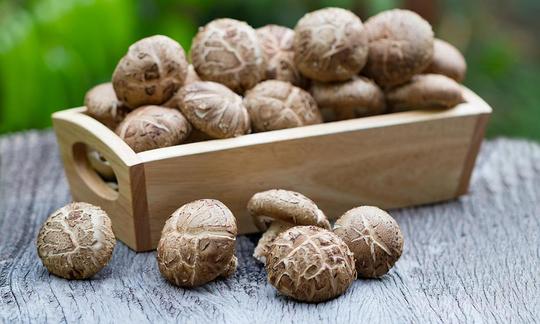

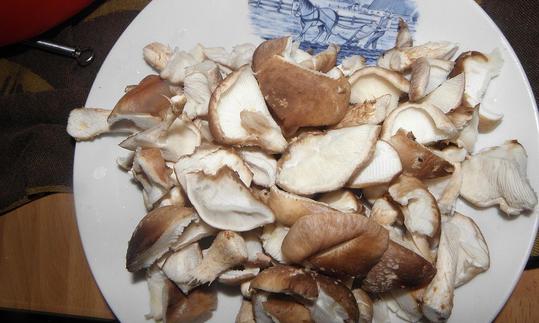

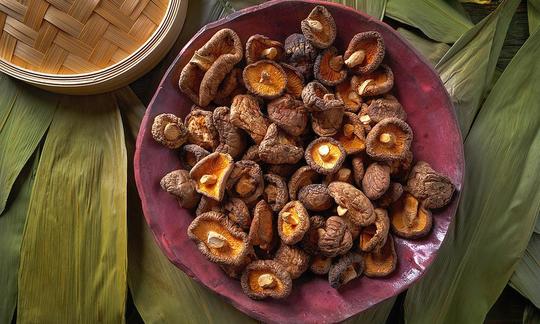

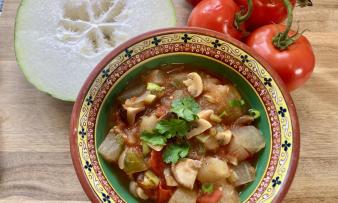
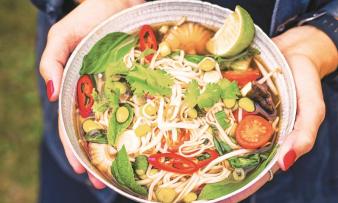
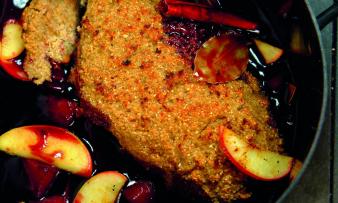
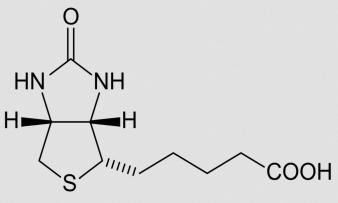
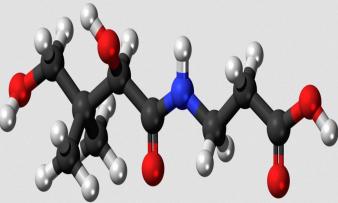
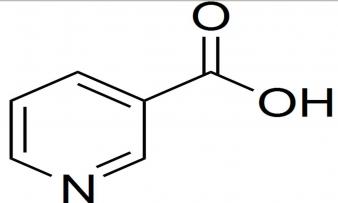


Comments